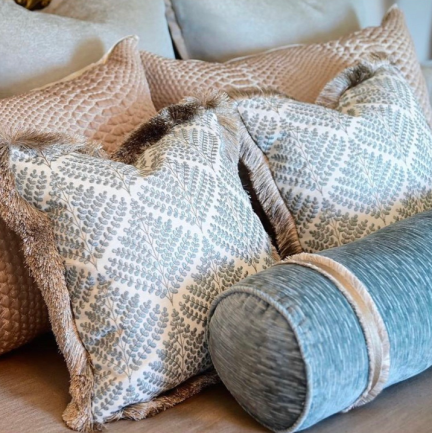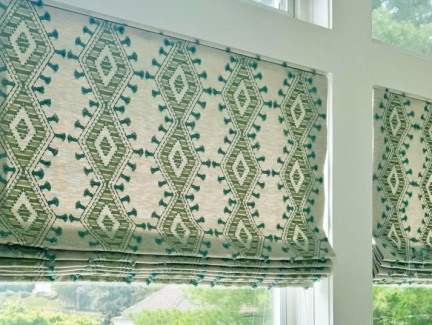Embroidered Fabric History
For almost as long as textiles have been in use, humans have been embellishing them. Embroidery comes from the French term, broderie, meaning embellishment, but its origins are truly global. From Siberia to China to Africa, embroidery has been delighting us for millennia. Though the art form of hand embroidery has been passed down and remains both a hobby and a trade, most modern day embroidered fabrics are machine-made. Embroidery, whether machined or hand-stitched, is a time-consuming process, and that is often reflected in the price of embroidered fabrics. But the variety, detail, texture, and opulence of embroidered fabric cannot be beat.
Embroidered Fabric Limitations
Embroidered fabrics are suitable for many applications. Because of the unique construction of embroidered fabrics, there are some limitations to keep in mind. Though many embroidered fabrics coming from the mill are given a high number of abrasions for durability, it is strictly referencing the base fabric. Once the embroidery is added, it changes the durability of the fabric as a whole. At Greenhouse Fabrics, we automatically drop the abrasions to 9000 to encourage proper application and durability expectations to the customer.



Embroidered Fabric Applications
While embroidered fabric on an armchair may be a beautiful choice, it is not a durable one. Buttons, zippers, and rivets on your clothing are likely to snag and pull at the stitching, not to mention our pet’s proclivity to prefer the one piece of furniture we wish they’d avoid. But embroidered fabrics make excellent drapery, pillow shams and cushions, headboards, table linens, decorative panels, and more. Avoid high use placements like couches, occasional chairs, and dining chairs.
Here are a few of our favorite embroidered fabrics:











